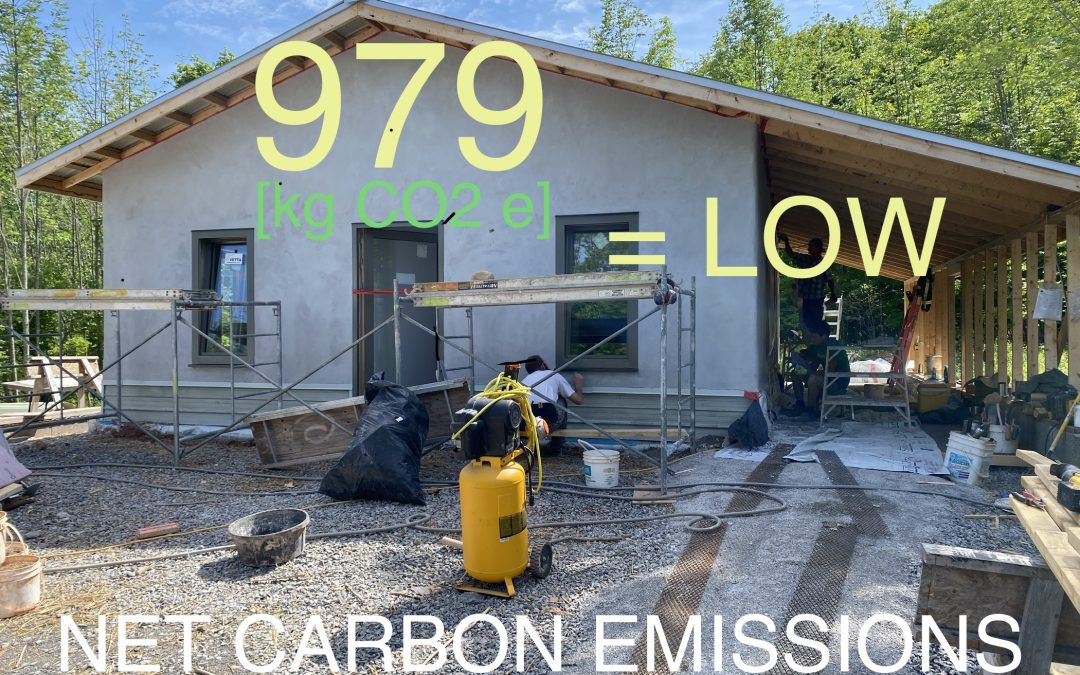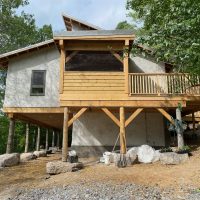Straworks is working on the climate crisis one building at a time by designing and building low carbon, or even better, zero carbon footprint buildings. How do we do this? Smashing rocks with a sledgehammer to make gravel? Excavating with a shovel? Cutting with a hand saw? Nope, we use BEAM– an online carbon estimating tool by Builders for Climate Action. It adds up the upfront material emissions and identifies the major offenders so I can reduce that material, or design it out altogether. I use BEAM at the design stage – once the concrete truck is rolling down the driveway, it is too late.
All building materials arrive at the job site with upfront carbon emissions from extraction, manufacturing and transportation, some more than others – BEAM surprises! Wood is not always good. BEAM takes the guesswork out of it and identifies where I can lower my project’s carbon footprints for real.
Once I had the floor plan and structure of a Gardeners Cottage, sketched out, I inputted the 800 sq. ft. straw bale house and all its materials into BEAM and got an initial as-drawn result. I then switched the concrete design mix to one with the same strength but 50% less cement, swapped new metal roofing for used, and lowered the carbon footprint by 2,555 kg CO2e.

BEAM Results
BEAM identified that the straw bale walls and the loose-filled cellulose insulation in the attic reduced the score even more! Straw is the single biggest climate hero on the job site, and cellulose is a close second. As it grew, the wheat straw sequestered 2.2 tons kg CO2e from the atmosphere, now stored in the walls. Similarly, the loose-filled cellulose insulation in the attic is storing and lowering the score by 960 kg CO2e. For comparison, I can see in BEAM that if we’d sprayed 6” of polyurethane foam, the project carbon emissions would have gone up by over 4 tons.
BEAM shows me how to DO SOMETHING to limit global temperature rise to 1.5 degrees Celsius above pre-industrial levels in a measured way. It shows me that by using more plant-based materials like hemp, straw, cork, bamboo and cellulose that sequester and store carbon dioxide and fewer materials with high material emissions, buildings can be more part of the solution to climate change and less part of the problem.





